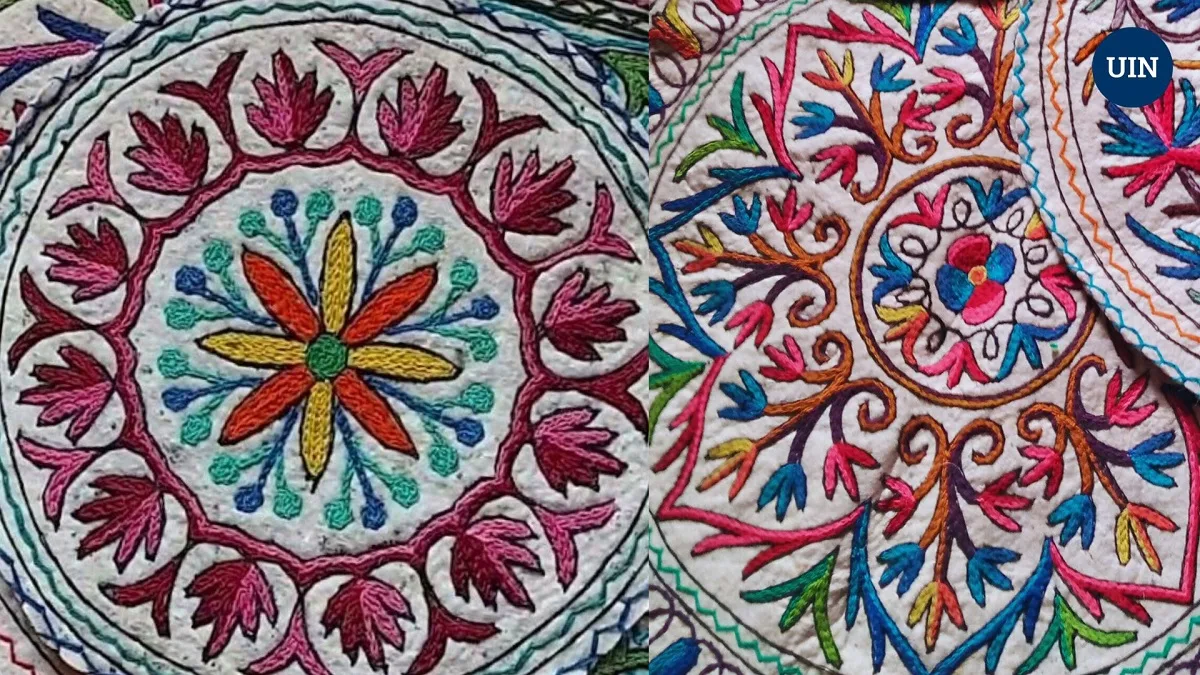
Namda Art: Reviving the Resilient Heritage of Kashmir's Ancient Craftsmanship
Namda art, an ancient and intricate craft originating from the scenic region of Kashmir, has been a testament to the cultural identity and creativity of the people in the northern part of the Indian subcontinent. This unique form of textile art involves the creation of thick felted rugs and carpets known as Namdas, made using locally sourced wool and traditional techniques passed down through generations.
Dating back several centuries, Namda art’s origins are believed to have been during the reign of the Mughal emperors in the 16th century. Skilled artisans, primarily women, practiced this craft, reflecting the rich historical and cultural influences of the region.
Table of Contents
The Art of Namda Making
The process of crafting Namdas is labor-intensive and demands great skill and patience. Wool fibers are beaten and fluffed, layered, and interlocked using water and a pinjra tool. After drying, these woolen canvases become a playground for vibrant embroidery, showcasing exquisite floral and animal motifs. Namda art is a harmonious fusion of wool, water, and artistry, crafted with timeless precision.
Namda’s Cultural Role in Kashmir
Namda art not only serves as decoration but also has functional purposes. The thick felted rugs provide insulation and comfort during harsh winters, making them well-suited for the cold climate of Kashmir. Additionally, they have been used as prayer mats, floor coverings, and saddle pads for horses.
Namda Art: Challenges to the Traditional Craft
However, modernization, economic shifts, and changing consumer preferences have posed challenges to this traditional craft. To combat this, various government and non-government organizations have launched workshops and training programs to promote Namda-making among younger generations. These initiatives ensure the preservation of this rich cultural heritage and provide exposure to national and international markets, helping Kashmiri artisans showcase their craftsmanship to a wider audience.
Revival Efforts: Skill India Project
The successful revival of Namda art through the Skill India project is a remarkable example of how government initiatives can preserve and promote traditional crafts. Launched under the Pradhan Mantri Kaushal Vikas Yojana (PMKVY), the Skill India project has breathed new life into this dying craft by providing training and opportunities to local artisans. With over 2,200 candidates from six districts of Jammu and Kashmir receiving training in Namda art, the project has not only empowered artisans with valuable skills but also created potential avenues for economic growth in the region.


Preserving Cultural Identity
This revival also holds broader implications for the cultural heritage of Kashmir. As an ancient craft with significant historical importance, preserving Namda art contributes to safeguarding the cultural identity of Kashmiri artisans and communities.
The success of the Namda revival can serve as a role model for other skill development projects across India. By investing in skill development and preserving traditional crafts, the country can ensure that its rich cultural heritage remains alive for generations to come.
Conclusion
Namda art stands as a shining example of how ancient crafts can be revived and rejuvenated with the right support and vision. The Skill India project’s efforts, in collaboration with local industry partners, have not only empowered artisans with skills but also strengthened the cultural fabric of the region. By continuing to invest in skill development and preserving traditional crafts, India can ensure that its rich cultural heritage remains alive for generations to come.





